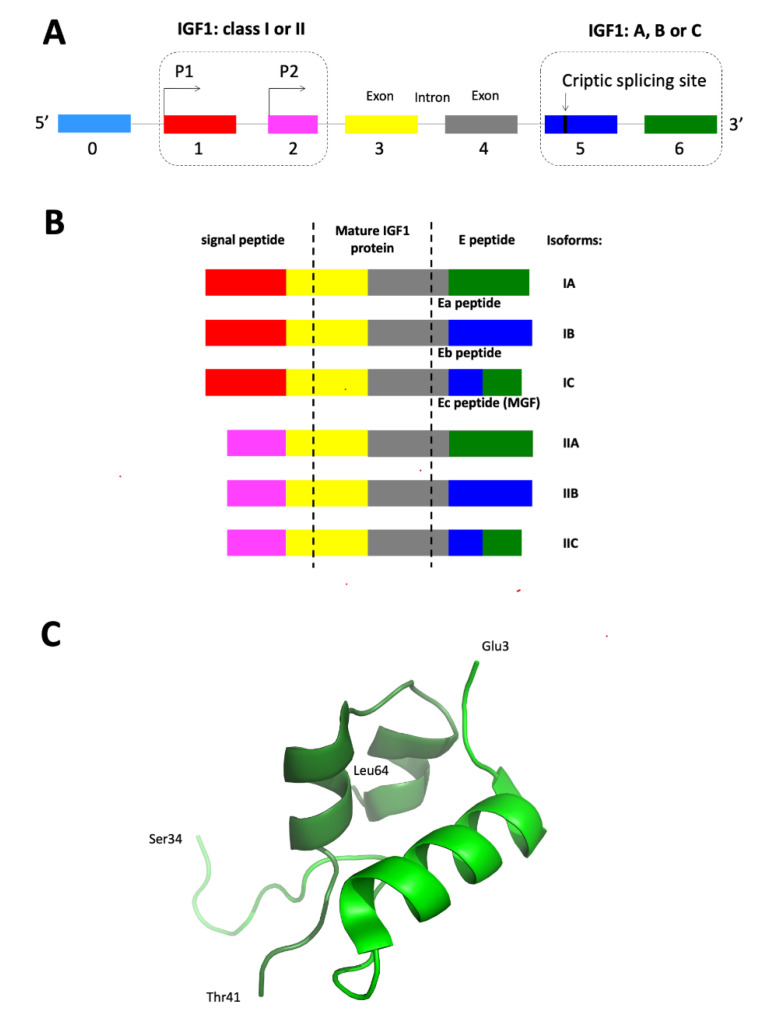Figure 1.
Simplified model of the human IGF1 gene structure (A), featuring main mRNA isoforms (variants) generated by alternative splicing and encoded precursor peptides (B), with the three-dimensional structure of IGF1 protein determined by X-ray crystallography, based on PDB no. 1IMX [79] (C). The human IGF1 gene is composed of 6 major exons and a newly discovered exon 0, upstream of exon 1 [54]. Splicing and exons in the human IGF1 gene generate distinct transcripts that vary in the 5′ and 3′ ends though the mature IGF1 protein is invariant. Transcription starts from one of the two promoters (P1 and P2) located in exon 1 and 2, respectively. Exons 1 and 2 are alternatively utilized and comprise IGF1 class I and II, respectively. Exons 3 and 4 are expressed in all known isoforms. Exon 5 is absent in isoform A (class I/II), but it forms isoforms B and C (class I/II). Transcripts containing exon 4 spliced directly to exon 6 are also referred to as IGF1Ea, those containing exon 5 spliced to exon 4 (and lacking exon 6) are referred to as IGF1Eb (unique to humans). The IGF1Ec splice variant in humans is an exon 4–5–6 variant. All peptide products derived from pro-IGF1 are shown. For details see text.

